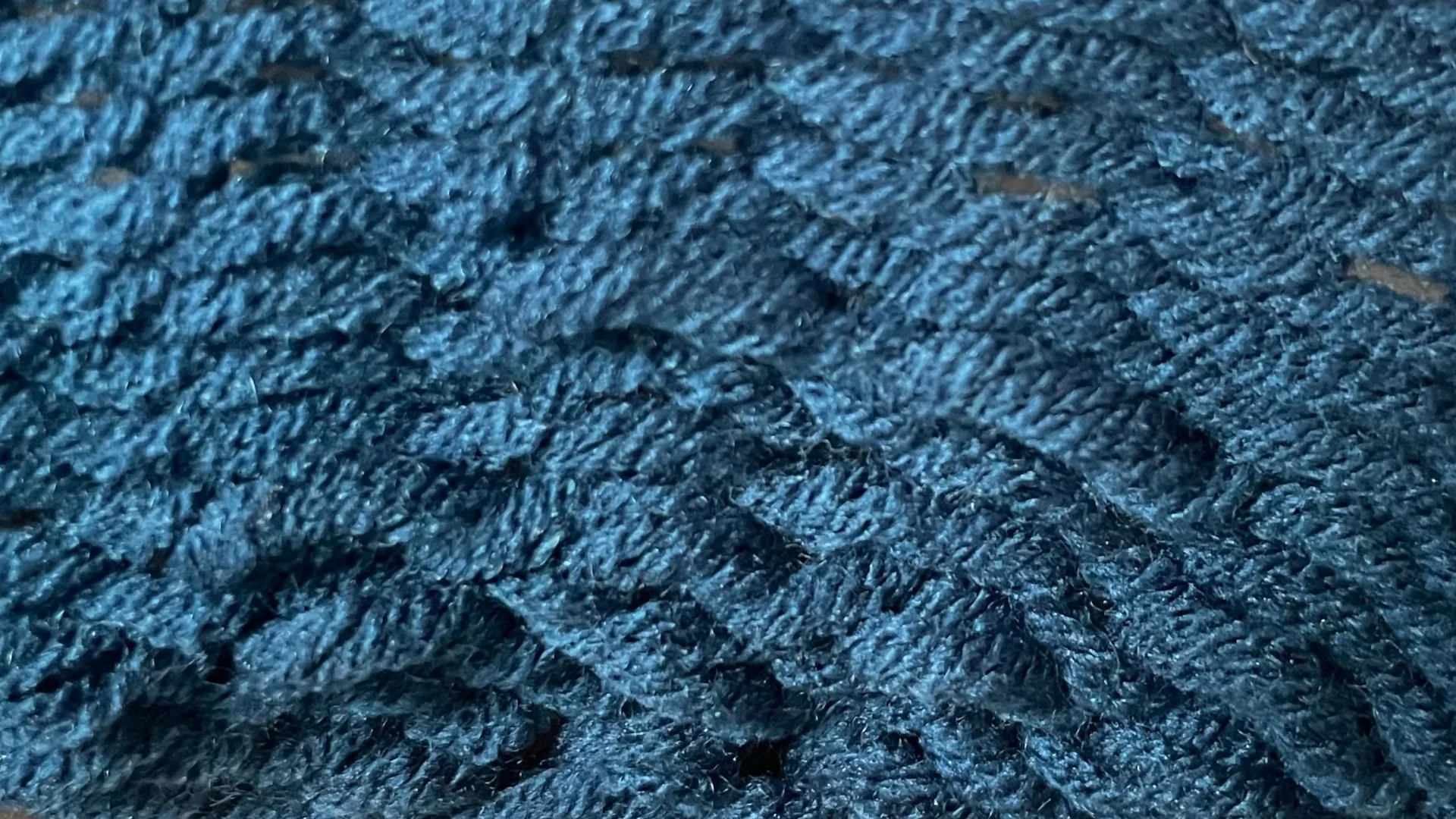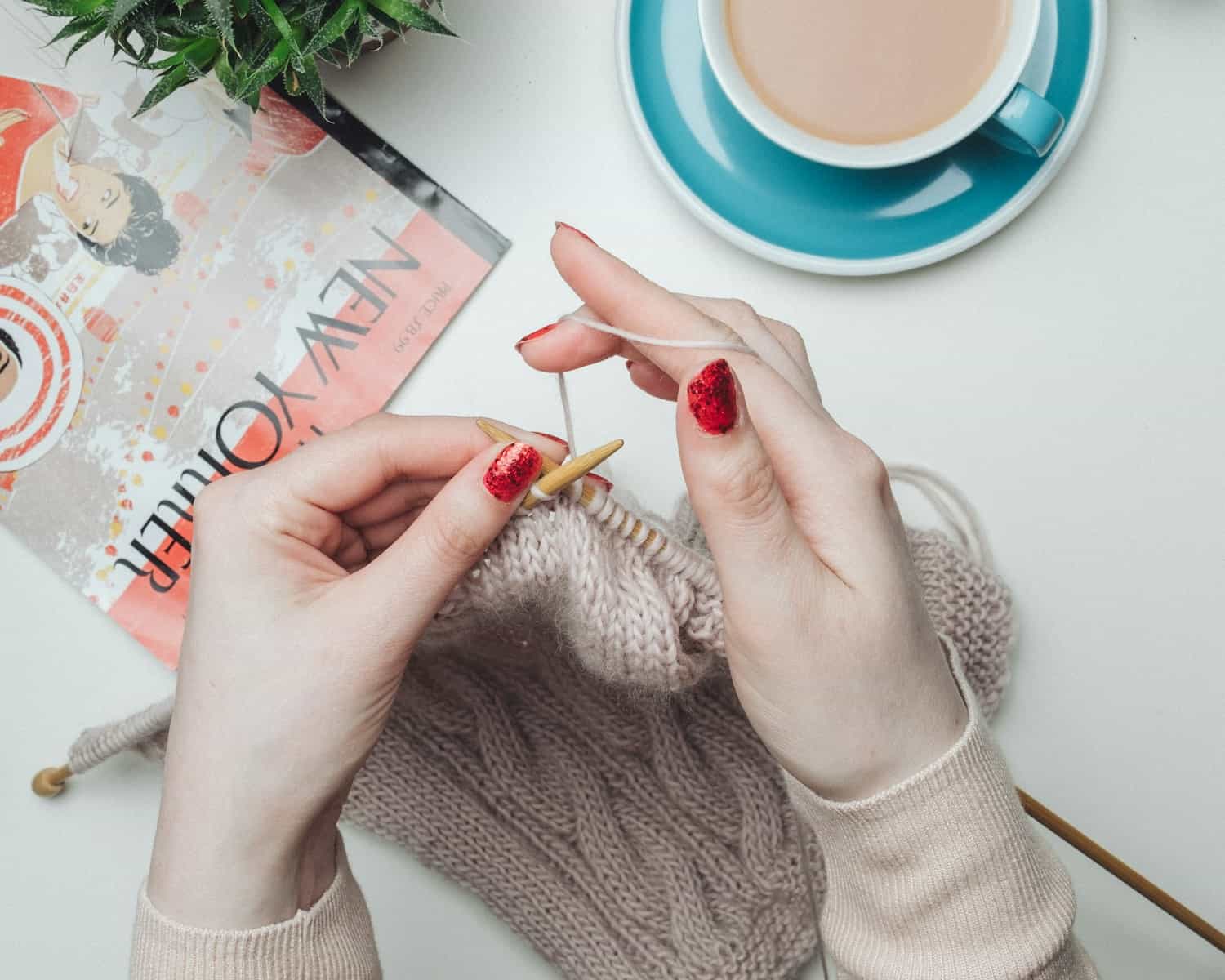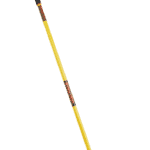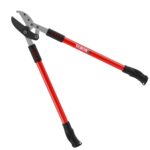Knitting is a craft that produces beautiful patterns and warm garments, but it can be frustrating to deal with issues when they pop up. Sometimes, you can recover from them; other times, you can’t. Two of the major issues you’ll run into are tucked or dropped stitches:
A dropped stitch creates a gap or run in the fabric. A tucked stitch bulges the fabric and makes it look unsightly. It’s important to identify and correct these errors quickly to prevent them from getting worse in subsequent rows. You can use simple techniques such as a knitting needle, crochet hook, or spare yarn to fix these common knitting snags. Most of the time you’ll be able to pick up right away after fixing them, but in some cases, you may need a few attempts as your repair work could be undone.

Repairing Knitting Mistakes: Fixing Tucked and Dropped Stitches
Even experienced knitters encounter the occasional tucked or dropped stitch. Don’t panic! Here’s how to fix them and keep your project on track.
What’s the Difference?
- Tucked Stitch: Looks like a small extra loop sitting over a stitch from the previous row. This normally happens when a needle doesn’t pick up the yarn for a stitch completely.
- Dropped Stitch: Appears as a hole or a “ladder” of loose yarn running down your project. This occurs when a stitch completely slides off the needle.
Fixing a Tucked Stitch
- Locate the tuck. It’ll be right above the proper stitch.
- Use a knitting needle or crochet hook. Carefully insert the tip underneath both loops of the tucked stitch.
- Pull the bottom loop upwards. Gently guide it through the top loop.
- Tighten and continue. Make sure the fixed stitch blends with the surrounding ones, then continue knitting as usual.
Fixing a Dropped Stitch
- Identify the dropped stitch. Find the loose “ladder” of yarn and the empty space where the stitch should be.
- Secure the live stitch. Insert a knitting needle or crochet hook through the loose stitch at the very top, directly below the current row, to stop it from unraveling further.
- Work your way back down. Using a crochet hook, pick up each loop of the dropped stitch “ladder”, working your way to the original dropped stitch.
- Put the stitch on your needle. Once you reach the bottom, place the last picked-up loop onto your knitting needle.
- Continue your project. Work the secured stitch normally on the next row.
Handy Tools
| Tool | Purpose |
|---|---|
| Crochet hook | Picking up dropped stitches, fixing tucked stitches |
| Knitting needle | Securing live stitches, fixing tucked stitches |
| Stitch markers | Marking the location of mistakes |
With a bit of practice, fixing tucked and dropped stitches will become a breeze!
Key Takeaways
- Dropped and tucked stitches are common knitting errors that can be corrected with specific techniques.
- Swift identification of these errors prevents further complications in the knitting project.
- Simple tools like knitting needles and crochet hooks can fix dropped or tucked stitches effectively.
Identifying the Dropped Stitch
In knitting, spotting a dropped stitch is crucial for maintaining the integrity of the fabric. It’s important to address the mistake promptly to avoid unraveling additional rows.
Distinguishing Knit and Purl Stitches
When looking at the fabric, knit stitches appear as small “V” shapes on the right side, which is often considered the knit side, especially in stockinette stitch. Purl stitches, on the other hand, show up as bumps and are typically found on the reverse side or on garter stitch pieces. Identifying which kind of stitch has dropped helps determine the best way to remedy the issue.
Tracing the Ladder
A dropped stitch can be tracked by the ladder it creates, which is a vertical column of horizontal strands. This ladder consists of the yarn that would have formed the stitch, now hanging between the rows. By examining the ladders, knitters can determine how many rows the stitch has fallen and use a needle to gently catch the stitch and secure it before it unravels further.
Repairing the Dropped Stitch
When a stitch slips off the needle, it can unravel rows below, creating a visible mistake in your knitting project. Repairing this dropped stitch is vital to maintain the integrity of the piece.
Basic Fixing Technique
To begin fixing a dropped knit stitch, one must first identify the dropped stitch and the ladders, which are the horizontal loops of yarn representing the rows below where the stitch should be. Start by securing the dropped stitch with a safety pin or a locking stitch marker to prevent further unraveling. Then, with the working yarn, one carefully loops each ladder through the dropped stitch one by one, starting from the lowest ladder and moving upward to reconstruct the column of knit stitches.
Using Tools to Aid the Process
A crochet hook can be a knitter’s best friend when dealing with dropped stitches. This tool makes it easier to catch the loose strands and pull them through the loop of the dropped stitch. To fix purl stitches, ensure that the ladders are situated in front of the stitch and that the hook is inserted downwards. For stockinette, alternating between knit and purl fixes may be necessary. In some cases, a spare knitting needle can assist in guiding the stitches back into place.
Securing the Stitch After the Fix
Once the dropped stitch has been worked through the ladders, it should sit on the left-hand needle ready to be knit as usual. To prevent the stitch from becoming twisted, attention should be given to the stitch’s orientation. After returning it to the left-hand needle and completing the repair, continue knitting as normal. Future slipping can be mitigated by blocking the piece and using stitch markers judiciously during the knitting process.
Frequently Asked Questions
When a stitch falls off your knitting needle, it might feel a bit tricky to fix. The good news is it’s pretty simple once you know the right steps. Here’s how to handle those common issues without starting over or stressing out.
What is the best method to correct a dropped stitch in the middle of a knitting project?
To fix a dropped stitch, you should first secure it with a crochet hook to prevent further unraveling. Then, you work the stitch up loop by loop until it reaches the current row. Carefully reintroduce it onto your knitting needle, and continue with your project.
How can one repair a stitch if it has dropped off the needle and there’s no loop to pick up?
If you encounter a dropped stitch without a loop, you can reconstruct the missing loop. Use a crochet hook to pull the horizontal strands of yarn through the loop, starting from the last intact stitch, and work your way up to the top row.
What should I do to fix a dropped stitch on a Sentro knitting machine?
For a Sentro knitting machine, you would manually pick up the dropped stitch with a small tool or a crochet hook. Gently work each loop through the next until the stitch is back in place, similar to a hand-knitting fix.
Is there a way to remedy a dropped stitch from a completed knitting piece?
When you’ve finished knitting, but find a dropped stitch, you can still repair it. Weave a piece of the same yarn through the dropped stitch, securing it in place to the neighboring stitches and hiding any gaps.
How do I fix a dropped purl stitch without unraveling my work?
To fix a dropped purl stitch, you should turn your work around to the knit side and use a crochet hook to pick up the stitch. Once corrected, turn your work back and purl the stitch as usual.
Can you provide troubleshooting tips for consistent stitch dropping on knitting machines?
Consistent stitch dropping on knitting machines can often be prevented by ensuring even tension on the yarn and regular machine maintenance. Check the machine needles and hooks for any bends or blunt edges that could catch the yarn.







